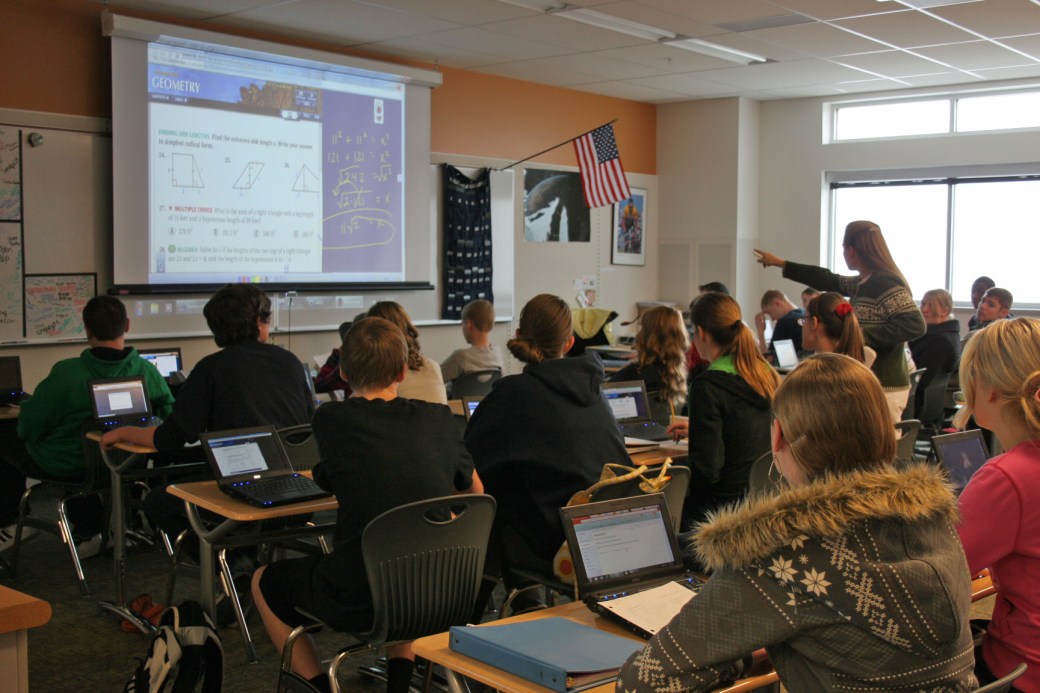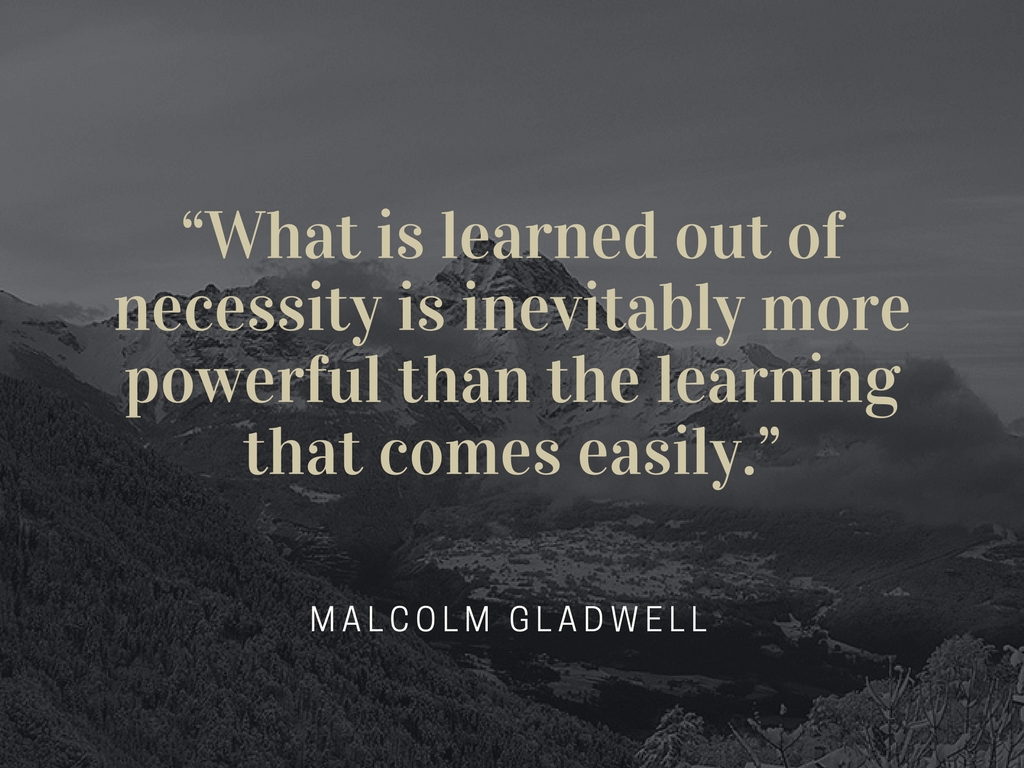As I listened to Daisy and my daughter, Shalyn, tell about the climb up Handies Peak, my mind immediately went to real life and educational applications, once the proud mommy glow had it’s moment. Feeling very inspired, I decided to go with the real life application in my first post of this series, Got A Mountain to Climb? Baby Steps. Are You Ready? We got this. As I pondered the educational side of this story, I realized that there is more than one area in education where we can apply this. My second post in this series, Got An EDU Mountain to Climb? Baby Steps. Are You Ready? We Got This! focused on the power of PLN’s (professional learning networks) and how we teachers sometimes ignore the power they provide and try to go it alone. But that isn’t the only educational application here. Some teachers may have sore toes by the end of this blog, and at times in my career, my toes would be among those trod upon here, though I’m ready to trudge ahead anyway. Are you ready? THIS post is dedicated to my husband, Cayl, (@caylst) and all those technology directors out there. I feel your pain. This is for you. Let’s grab our gear and get started. Baby steps. We got this. 
As I enter my 22nd year of teaching, I can remember times where I wasn’t sure I could do something with my students because I didn’t have the right tools. I was given a new class or subject without training. A new position was thrust upon me suddenly with no time to prepare. Sound familiar? Well don’t stop now. The truck is still in sight, even though our legs are straining with the effort. Lungs are screaming. Baby steps. Let’s go a few more feet. Are you ready? We got this.
I know several of my PLN on Twitter and Voxer are heading up new trails this year. They have new titles, positions, buildings, school districts, and some have new places to call home. Some, like me, just have a new class or new grade level to teach. If none of those fit you right now, keep in mind that this is the nature of education, and things will change for you sooner or later. At some point in our careers, we all work our way down from the top and move on to climb different peaks, or we take new trails (willingly or not) on the way up to the summit. Sometimes we are Daisy, prepared and ready to go with experience behind us and determination propelling us forward. At other times, we’re Shalyn. We suddenly find ourselves paralyzed the night before, looking for the proper things to throw in our pack, laying out what we need to wear, and realizing quickly that we don’t actually have everything that we need, and we don’t know what we’re doing. Breathe.
The night before Shalyn hiked up her very first mountain, I visited Daisy’s cabin to help her make the lunches and see what all she was packing for the hike. Austin, Kiana, and Daisy were all busy packing when I arrived. Daisy explained that she had rain ponchos for all of them, her own warm waterproof gloves, hiking socks to wear, a pair for Shalyn and Kiana, and another pair in her pack, 3 bottles of water, snacks, layers to wear in the cold, and other essential items. Each item going into their packs had to be considered carefully, because every step taken the next day up the mountain would make the pack feel heavier and heavier.
Now Shalyn didn’t enjoy packing her bag the night before the hike. I found myself a bit frustrated with her, as she kept realizing all of the things she would need that she didn’t have, and the task grew larger and larger and perhaps seemed impossible. The negatives outweighed the positives. She was to carry the first aid kit for the group, her own snacks, three bottles of water, gloves, extra layers, extra socks, pocket knife, sunscreen, bug spray, Germ X, etc. We realized first that her gloves weren’t waterproof. They were cute and had the smartphone fingertips, but that wouldn’t be helpful in higher elevations that are snow covered. She borrowed hiking socks from Daisy, and we packed her meager supplies. Most of what went into Shalyn’s pack were the things she typically carried in her backpack when riding trails with her dad, brother, and the rest of our crew. While some of those items were helpful, they weren’t quite what she would need on this climb. Shalyn’s anxiety was growing, so I reminded her that she didn’t HAVE to climb the mountain. She had the opportunity, but she wasn’t being forced. She took a deep breath and steeled her determination. Despite not having the right stuff or training, Shalyn was going to climb the mountain. We did the best we could with what we had and loaded up her pack. I then set my alarm for five in the morning, and we called it a night.
Daisy and the three young adults got off the next morning and headed up the mountain roads to the trail head for the hike. As noted in the first part of this story, Shalyn realized that while her hiking boots helped her keep her footing and prevented slipping and falling, they were extremely heavy and required more energy when lifting her legs for each baby step up the mountain. Her cute gloves didn’t keep her hands dry and warm as she maneuvered through snow to find good handholds for steady hiking. While Shalyn’s backpack works well for riding mountain trails on her four-wheeler, it was not designed for this type of hiking. She needed one that was lighter and has the support around the waist. She had no training. This was a sudden decision. Don’t panic. Breathe. Baby steps. Are you ready? We got this.
If you read part one, then you know that Shalyn made it up and down the mountain on the hike despite the fact she had no training and did not have all of the right equipment. Would the training and the right stuff have helped improve her experience? Sure, but there’s also something to be said for the tenacity she found within herself, aided by Daisy’s motivational encouragement, that can really only be learned the hard way, through necessity. Shalyn now knows that she can accomplish incredible things, even when she isn’t fully trained or equipped. Even when it is tough. Hard. Demanding. You can put down your pack now and rest a bit. Here’s where I step on your toes and mine. 
Our profession seems to be filled with several paradoxes. I was fortunate enough to listen to George Couros ( @gcouros ) recently thanks to Dan Kreiness @dkreiness who used Periscope to broadcast on Twitter George’s keynote address for #iChampion in Texas. He pointed out several things that fit with my message here. Our classrooms and lessons are for the students, not us. We don’t have to be comfortable with everything, but we should make the students comfortable with their learning and learning process, their environment, with innovation, effort, creating and teaching. We want students to be independent thinkers, but we tell them to read the chapter and answer the questions. We teachers also have been known to only accept answers that are from the textbook or agree with it. We don’t always encourage inquiry or foster it. We get so focused on rules that we don’t let their creativity take it’s natural form, which is messy, and sometimes loud.
We don’t always have the right equipment. How many of us think our day is ruined and no lessons can be taught if our SMART Board isn’t functioning properly, or the projector isn’t working? We can’t always see how we could possibly teach if a website we planned to use goes down unexpectedly. How do we react if a student doesn’t have paper or a pencil? Do we model problem solving or do we demand everything get fixed right then, by someone else? Do we feel like second class citizens if we aren’t 1:1 with (insert your device of choice here) in our classroom? Do we cause problems or do we help solve them? What are we actually modelling for our students?
In the above quote, George is referring to how we tend to let a few negative responses or incidences ruin experiences for the rest of our students. If we try a new technology and one or more students is inappropriate, we tend to ditch the whole thing. I can tell you that there are always and will always be students who are inappropriate with whatever you are using in your lesson. A few years ago, I had to remove one of my Lord of the Flies novels from class use because of inaccurately drawn male anatomy on one page. I did not, however, stop using my paperback copies of Lord of the Flies or stop teaching the novel. If that were a technology, though, would I have stopped using it altogether because a student was inappropriate? Maybe then, but now I wouldn’t. As George points out, we need to find ways for those students who are flourishing in the new initiative or technology to overwhelm those abusing it. Drown them out with the positives. And fellow teachers, we need to do the same thing for the handful of teachers in our districts that negatively react to change, progress, and innovation. Find ways for you and others who are flourishing in the new initiative or technology to overwhelm those who are resisting. Drown them out with positives and enthusiasm. Encourage them. Be their Daisy. Baby steps. Are you ready? We got this. Let’s go a few more feet.
We all have some negative moments, but we need to keep the summit in view. Don’t panic. We can still make the hike, learn things along the way, and prevail with our group if we listen to Daisy. Baby steps. Are you ready? We got this. So grab the gear you have, remember to breathe, take those small steps and climb. The first day of school is right around the corner, and we have amazing things to do this year. Every year. Let’s go!


Excellent post. Thanks again for sharing your insights and thoughts. We definitely need to accentuate the positive. However, there are times that we need to deal with those who are negative or not doing what is asked for the sake of the group. Making those decisions and following through is important for everyone.
LikeLiked by 1 person